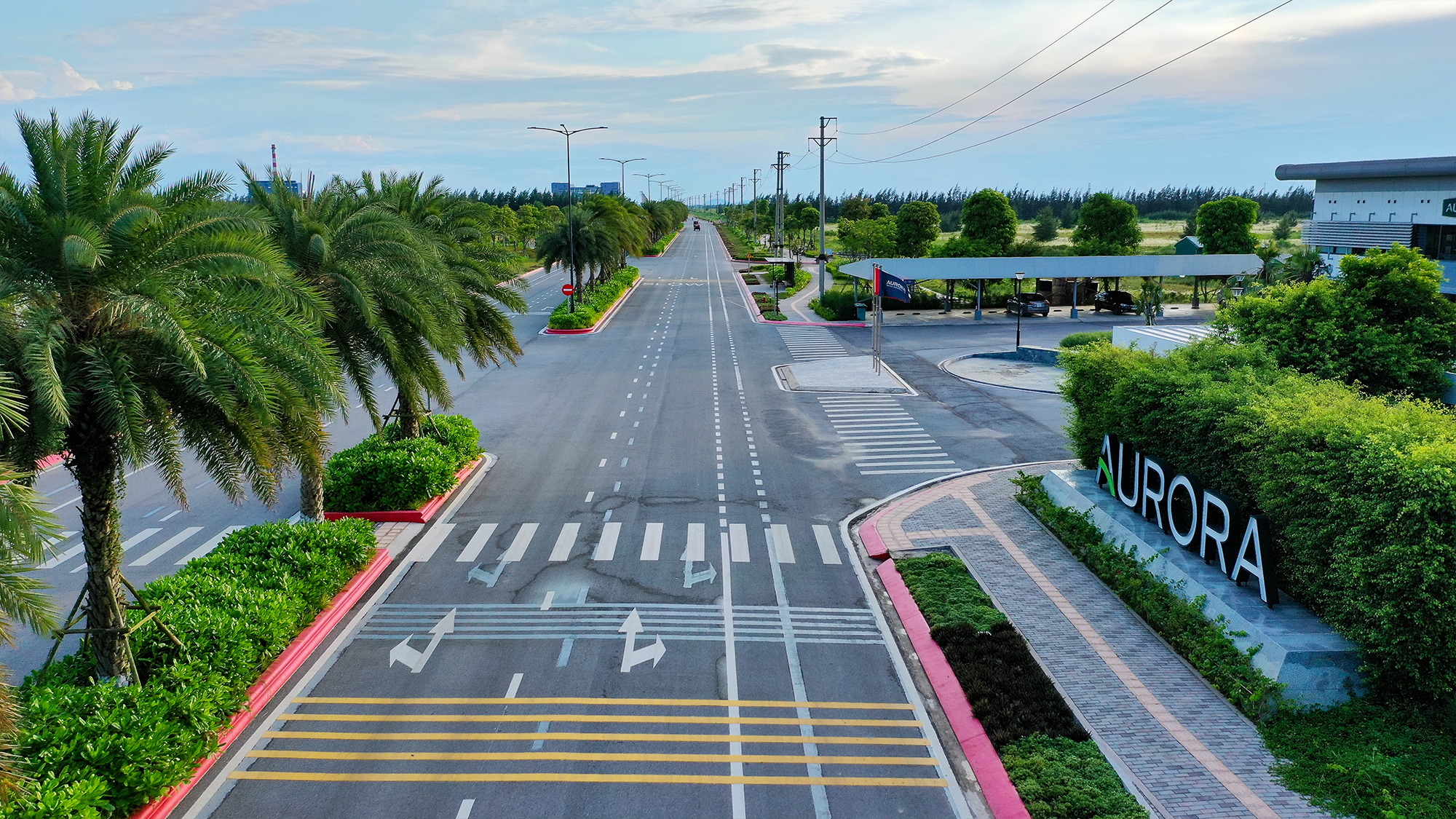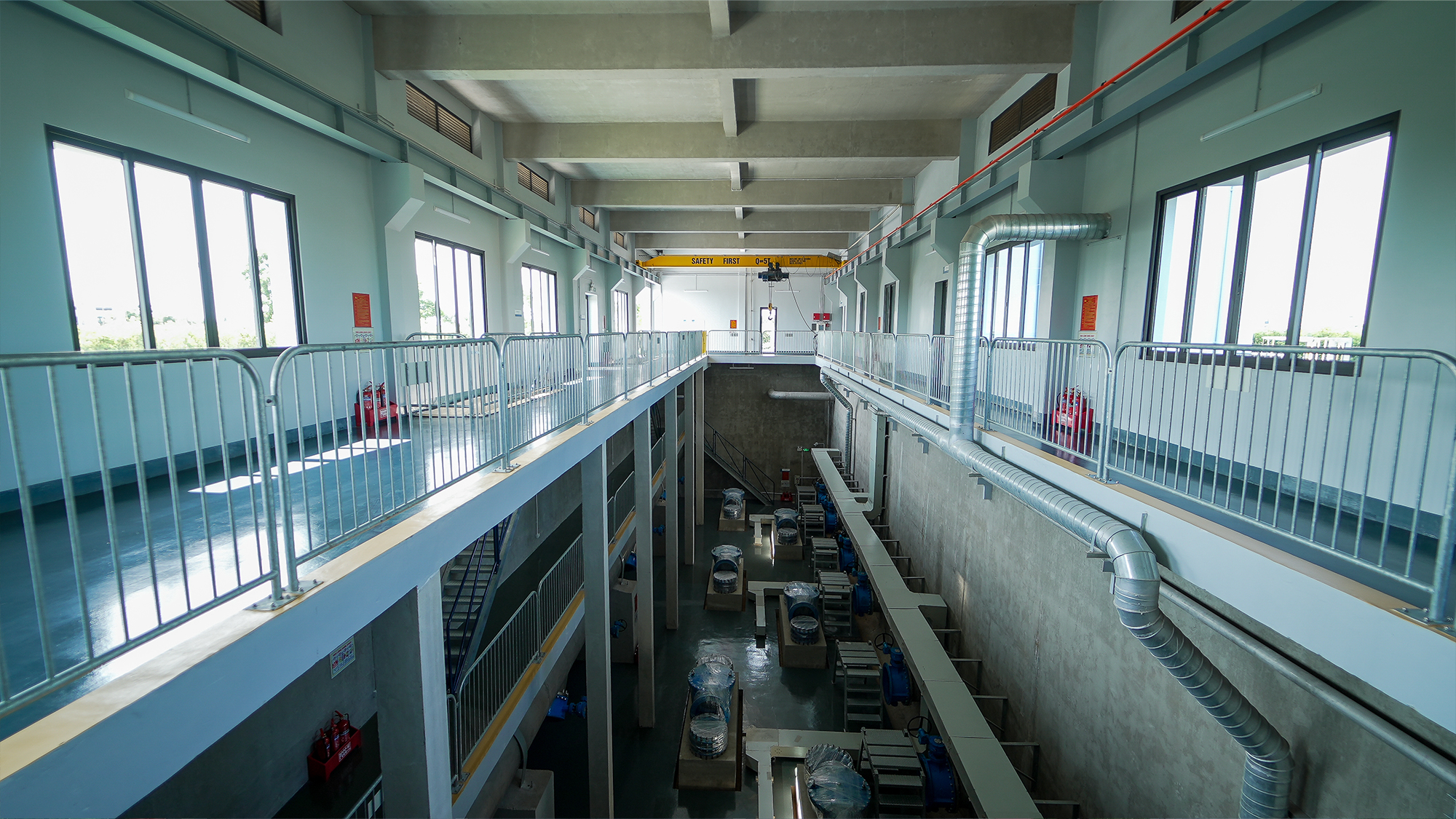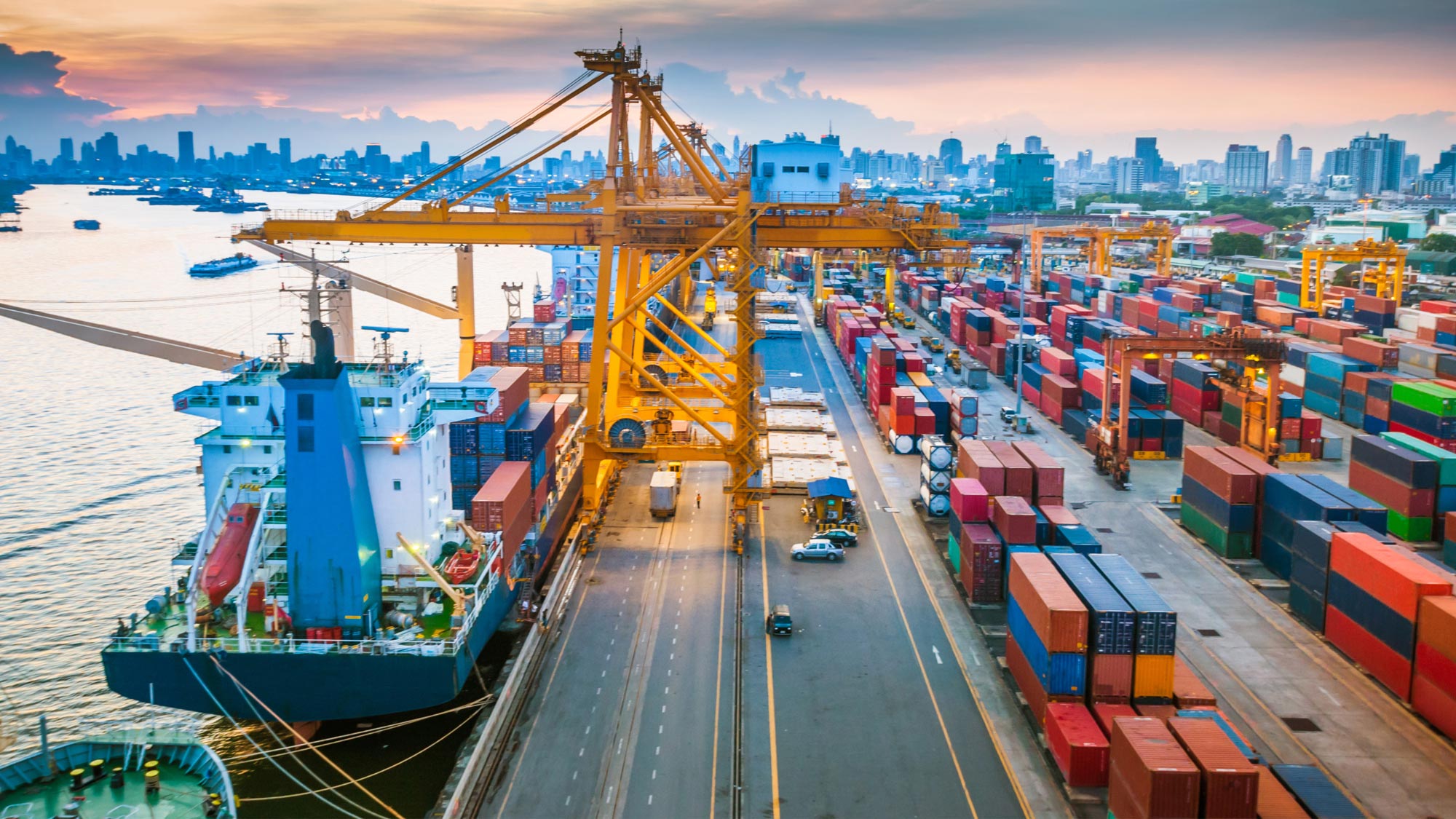

A. Existing roads connecting to the Industrial Park:
- Provincial road 490C from Do Quan bridge to Nam Dien commune: 55.2km long from Do Quan bridge to Industrial Park, 100% asphalted, meeting the standards of grade III Delta road: the roadbed is 12m wide, has 2 lanes, design speed is 80km/h.
- The road connecting Thinh Long bridge crosses Ninh Co river with Hai Hau and Nghia Hung districts of Nam Dinh province. The bridge has 27m deep piles, with a maximum load of 60 tons, invested by Korean ODA. Thinh Long Bridge has the first point of intersection with National Highway 21 at Km 202+400 (in the territory of Hai Chau commune, Hai Hau district), the end point of intersection with provincial road 490C (in the territory of Nghia Binh commune, Nghia Hung district). The bridge is 988m long with 19 spans, the bridge deck is 12m wide, including two lanes for motor vehicles and two lanes for rudimentary vehicles. The design speed of the bridge is 80km/h. The project was started construction in October 2018 and officially put into operation from May 28, 2020.
B. Routes are being implemented connecting the Industrial Park with other provinces as follows:

- Total capacity: 170,000m3/day and night
- Input water: Surface water is taken from Day river and Binh Hai canal;
- Modern and advanced technology combines sustainable and environmentally friendly factors, ensuring that the treated water meets the standards according to current regulations of the State and meets the water demand of secondary investors for production activities.
- Standard of water supply after treatment: meeting the national technical regulation on quality of clean water used for domestic purposes QCVN 01-1:2018/BYT at the time the regulations take effect.


Specialized wastewater treatment system
- Total capacity: 110.000m3/day and night.
- Advanced technology combined with sustainability criteria, ensuring the ability to handle complex and volatile wastewaters arising from textile and dyeing activities, meeting safety and environmental protection standards and regulations.
- Standard of wastewater after treatment: according to QCVN 40:2011/BTNMT and QCVN 13-MT:2015/BTNMT
- Method of receiving wastewater: (1) receiving wastewater directly from the factory of the secondary investor, which has been treated to reach the limit parameters required by the industrial park; or (2) receiving wastewater that has been treated to grade A in accordance with QCVN 40:2011/BTNMT into the receiving and monitoring system at the centralized technical site before being discharged into the environment."

- 110kV substation with capacity of 2 x 63MVA; 350T/h centralized boiler solution.
- Supply voltage of 0.4kV or 22kV to the foot of the factory fence, electricity price according to the tariff prescribed by the State."

- Solid waste treatment
- Waste Gas treatment
- Noise pollution treatment
- Renewable energy applications

- Fiber optic service
- Domestic and international Internet service
- Landline phone, IP phone, international roaming service
- High Speed 4G Hotspots
- Cable TV service

The inland port system on site and the seaport directly connecting to the industrial park helps to maximize the efficiency of production costs for customers.

- Minimum salary: Region 3
- Population: 1,836,269 people
- Bus route to Industrial Park
- Accommodation, services for workers, officials, managers, experts and a safe living environment (with kindergartens, schools, hospitals)


Form an ecosystem with accommodation, schools, hospitals, post offices, banks, human resource consulting and support centers, supermarkets - markets - commercial centers, restaurants and food services drink to ensure comfort and well-being for professionals and workers working in the industrial park

‑ Apply the CIT rate of 10% for 15 years, exempt from tax for up to 4 years and reduce 50% of payable tax for up to the next 9 years (conditional application)
- Completely exempted from import tax on machinery and equipment forming fixed assets. VAT (10%) will be refunded as soon as the factory comes into operation;
- Decision 68/QD-TTg approving the Supporting Industry Development Program from 2016 to 2025, focusing on the field of components and spare parts; textile - footwear and high-tech industry with a total capital of nearly 1,000 billion VND; including promotional activities; administration; improve the quality of human resources; technology transfer and innovation and building information sites

Textile industry includes spinning, weaving-dyeing-printing fabric, garment and other textile accessories (such as buttons, threads, buckles,...)"

Nam Dinh province is considered as the cradle of Vietnam's textile industry with a long history of more than 100 years. The network of raw material suppliers for the textile industry in Nam Dinh ensures the supply and meets the production and business needs of investors, helping to save costs for input materials.
